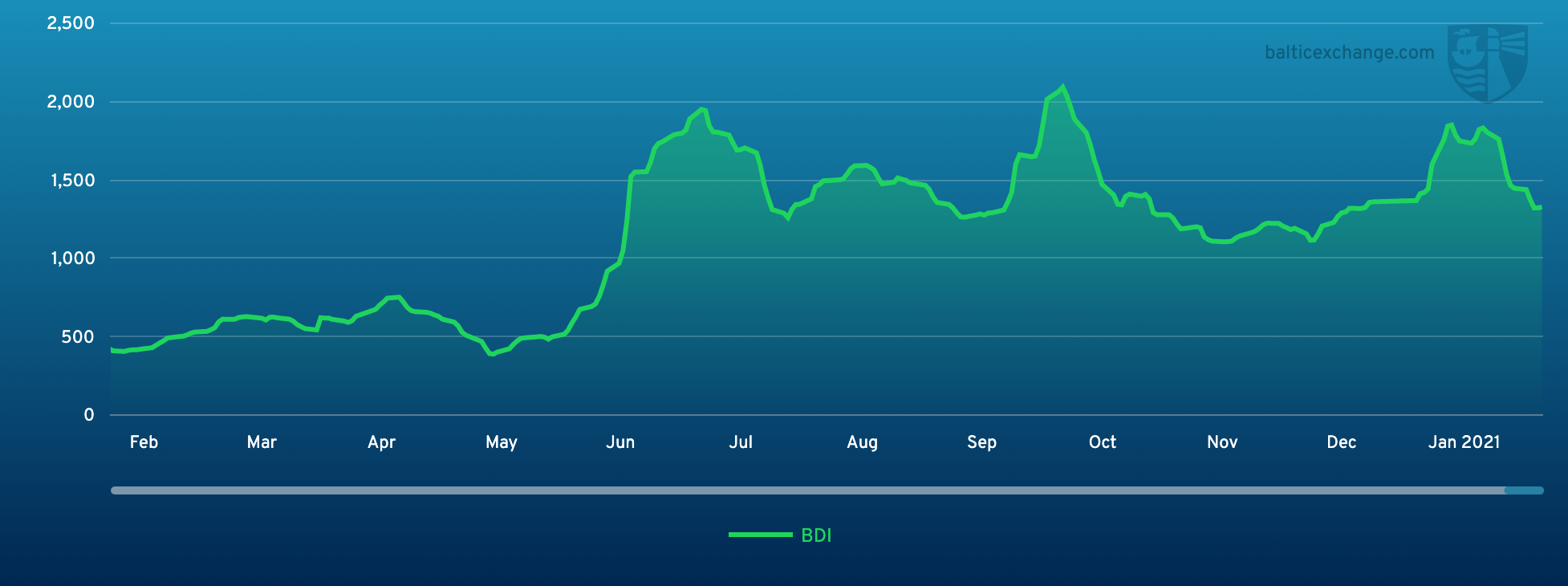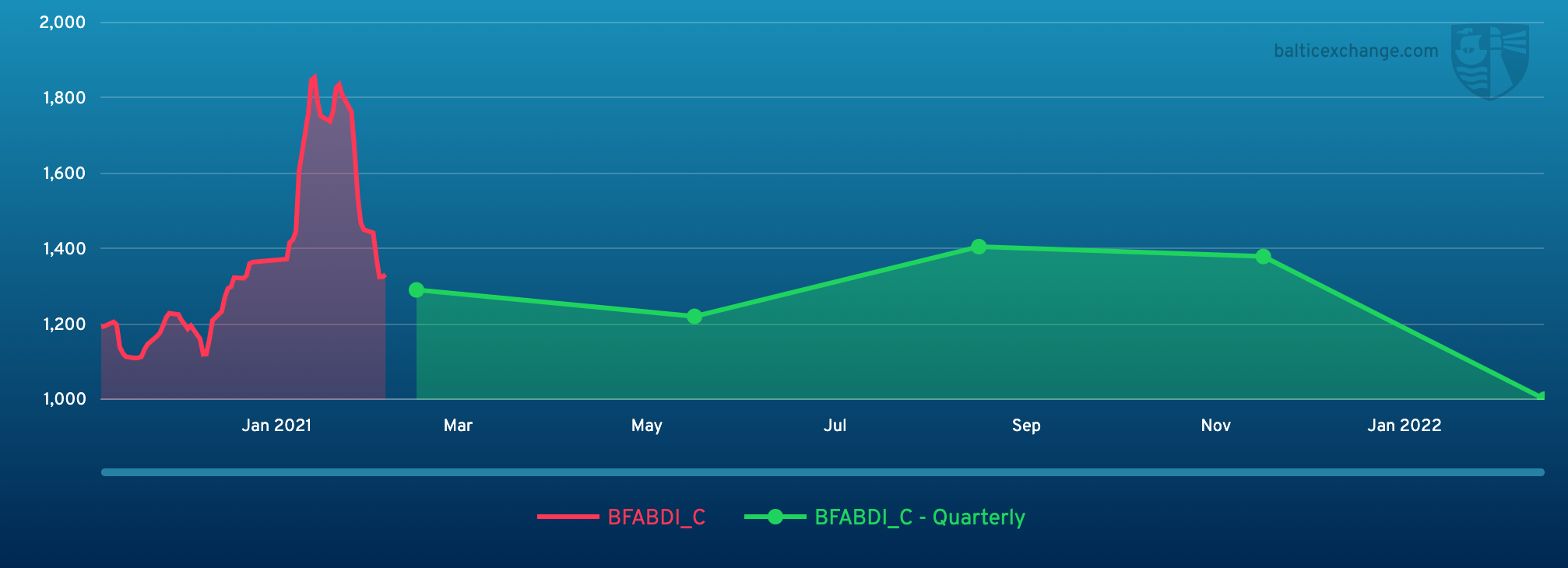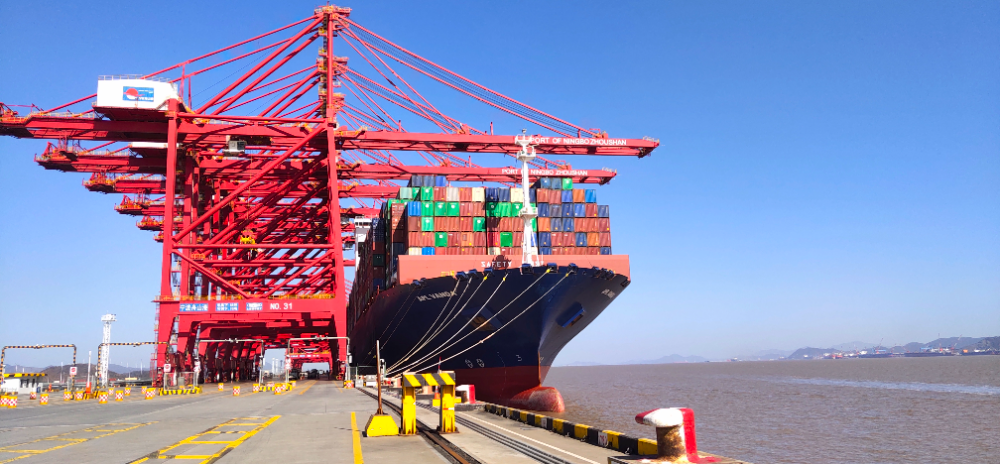BEIJING, Feb. 8 (Xinhua) -- The Baltic Exchange has published its weekly report of the dry and tanker markets for February 1-5, 2021 as below:
Capesize
The market began to meet increased resistance to the recent slide in rates as the week progressed. With talk of a floor being found to provide some stability, it was heard that forward markets reacted positively. The north Atlantic basin was the big mover this past week with the Transatlantic C8 falling $6,645 week-on-week to settle at $16,605. The Pacific, in contrast, still remains at a heavy discount with the Transpacific C10 closing the week at $7,788. Market cargo activity in the region was relatively low with weather considerations for the West Australian miners early in the week. The West Australia to China C5 largely traded sideways throughout the week to settle at $6.009. Moving into Chinese New Year next week, the market is expected to start quietening down. Most of Asia will have public holidays and are expected to remain at home as Covid-19 restrictions still play out.
Panamax
The week commenced largely passively in places with little sign of a direction. The North Atlantic was resilient for the most part with sound demand from the Baltic, where breaching INL was required, and the North Americas were assisted by tight tonnage availabilities. From EC South America it was a muted start to the week. But activity picked up a little by Thursday with several rumours emerging, like an 82,000dwt delivery SE Asia which achieved in the region of $14,500 and others faring better in some cases. The rates in Asia slowly eroded as the week went on with little activity. Sporadic fixing appeared out of north Pacific with nice well-specified types achieving closer to $13,000 levels. However, smaller and less desirable types appeared to discount heavily only adding to the squeeze in rates for much of the week. Period activity was well supported with several deals concluded including an 82,000dwt agreeing to $13,000 for short period.
Ultramax/Supramax
A mixed bag over the last week, with the Atlantic remaining relatively firm whereas the Asian market saw a drop in activity levels and rates with the upcoming Chinese New Year celebrations on people’s minds. Period activity remained, an Ultramax open China was fixed for a year at $12,500 and for a short period a 56,000dwt open Indian Ocean fixed four to six months in the mid $14,000s. As the week closed certain areas in the Atlantic saw a tightening of fresh tonnage. A 61,000dwt open US Gulf fixing a trip to west coast Mexico in the mid $30,000s. Elsewhere, demand was healthy from the Continent as a 56,000dwt fixed a scrap run to the Mediterranean at $17,250. The lower rates in Asia were reflected by a 56,000dwt open Singapore fixing a trip via Indonesia to west coast India at $8,750 and a 63,000dwt open Japan fixing a trip via north Pacific with redelivery Bangladesh at $12,750.
Handysize
Despite having a slower start than usual, both the BHSI and time charter average climbed further throughout the week. Market participants considered the Skaw-Passero range slightly quiet, but also saw more mid-end February cargoes coming out. A 39,000dwt open Casablanca was fixed for a trip via France to west Africa at $19,000. The US Gulf was reportedly having a surge since mid-week, with high rates fixed for trips to west coast Central America. In the east, brokers suggested vessels with prompt dates were limited, but there were still cargoes to be covered before Chinese New Year. A 35,000dwt open in the Arabian Gulf next week was fixed for a trip via the Gulf to Bangladesh at $17,500. A similar-sized vessel open in Bangladesh was fixed for a trip via east coast India to Saldanha Bay at $6,000 for the first 35 days and $10,750 thereafter.
VLCC
The VLCC market remains in the doldrums with little joy or optimism for owners on the income front. In the Middle East region, rates for 280,000mt to USG via the Cape/Cape routing were unchanged again at the WS18/18.5 mark, while rates for 270,000mt to China slipped half a point from last Friday’s level to just below WS31 (a TCE of about $1,500/day). In the Atlantic region, the market for 260,000mt West Africa to China eased a single point to WS34 ($3,600/day TCE) and 270,000mt US Gulf to China fell about $40,000 from a week ago to around $4.24m level.
Suezmax
Rates for 135,000mt Black Sea/Med market fell WS4 points to between WS67.5/70 level (about $5,000/day TCE), while the 130,000mt Nigeria/UK Continent market lost over 15 points to low WS50s (about $4,000/day TCE). There was no change in rates for 140,000mt Basrah/Med, which remained in the low WS20s region.
Aframax
Ceyhan/Lavera has remained unchanged this week at WS77.5 basis 80,000mt and in Northern Europe rates for same size cross-North Sea remain at WS77.5 (a TCE of -$6,700/day). In the 100,000mt Baltic/UK-Continent market, rates eased a couple of points to between WS55/57.5 level. On the other side of the Atlantic, having shed over 10 points early in the week to below WS70, the market has picked up a little and is now assessed in the low WS70s, down nine points week-on-week. For the 70,000mt US Gulf to UK Continent trip rates took a seven-point dive early and recovered to where they were at the start of the week, in the low WS70s.
Clean
Charterers have managed to squeeze rates down a further 2.5 points in the Middle East Gulf/Japan market for LR2s to sit now at WS67.5. In contrast, the LR1s have made a very modest gain nudging up a similar amount WS77.5 for 55,000mt. This is partly on the back of higher bunker costs but also uncertain itineraries on tonnage. For MR tonnage on AG/East Africa, it has been one-way traffic with the market sliding 11 points to WS120 region. For MR owners trading Continent/USAC it has been a disappointing week due to ballasters from the USA. As such, the market has dropped almost 10 points to mid WS120s with the expectation of further downward pressure. The backhaul trade for MRs from US Gulf to UK-Continent has been steady at an uninspiring WS70/72.5 level for 38,000mt. The only crumb of comfort here being that the market started the week at WS70, so one can argue it has gained around 2.5 points. For US Gulf to Brazil it has been an uneventful week with rates hovering at or close to WS112.5 level basis 38,000mt. In the cross-Mediterranean trades it was another slow week as rates weakened further due to excessive tonnage in both east and west Mediterranean, from WS140 at the start of the week to around WS120 level now.
Headquartered in London and a subsidiary of the Singapore Exchange (SGX), the Baltic Exchange publishes a range of indices and assessments which provide an accurate and independent benchmark of the cost of transporting commodities and goods by sea. These include the Baltic Dry Index (BDI), the dry bulk shipping industry's best known indicator. Published daily since 1985, this provides a snapshot of the daily spot market earnings of capesize, panamax and supramax vessel types on the world's key trading routes.

Chart shows Baltic Dry Index (BDI) during Feb.6, 2020 to Feb. 5, 2021

Baltic Forward Assessment for BDI
In March 2018 the BDI was re-weighted and is published using the following ratios of timecharter assessments: 40 percent capesize, 30 percent panamax and 30 percent supramax. The information is provided by a panel of international shipbrokers.
(Source: The Baltic Exchange, edited by Niu Huizhe with Xinhua Silk Road, niuhuizhe@xinhua.org)




 A single purchase
A single purchase









